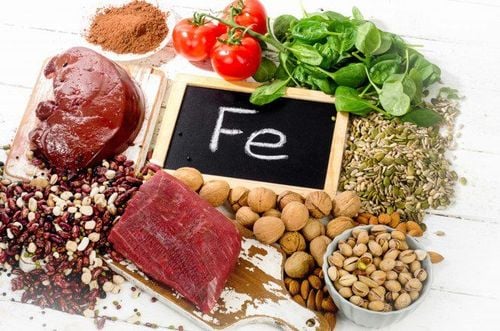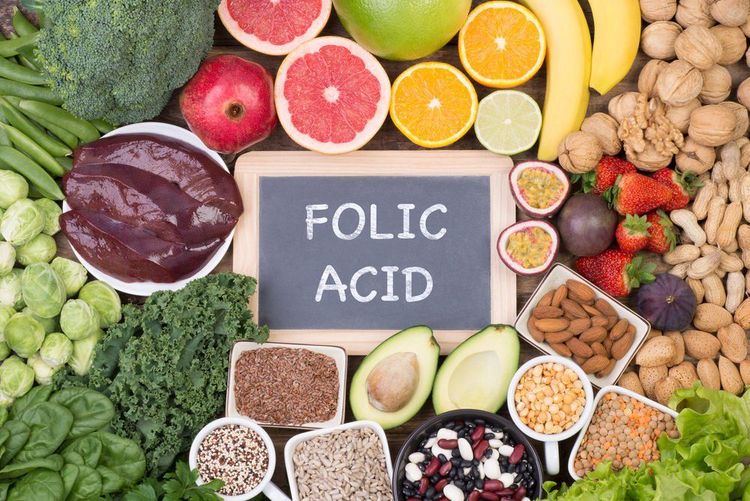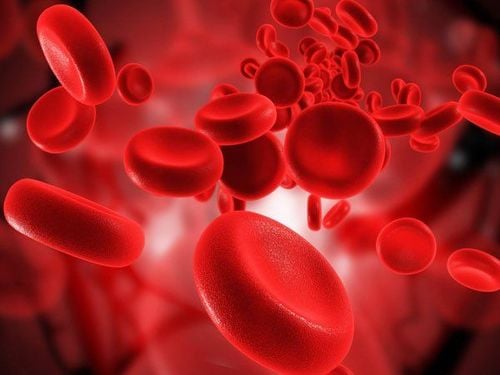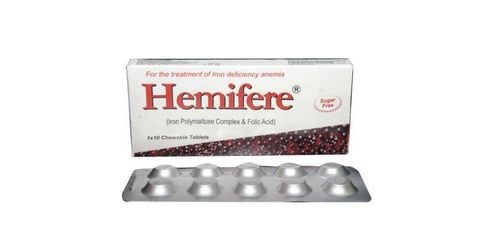This is an automatically translated article.
The article was professionally consulted by Dr. Phan Nguyen Thanh Binh - Head of the Department of Nutrition and Dietetics, Vinmec Central Park International General Hospital.Anemia is a condition in which the hemoglobin or red blood cell count is below the normal limit for people of the same age. Anemia in children reduces the body's resistance, affects growth, psychomotor development, learning ability, and intelligence. In pregnant women, anemia directly affects the brain's maturation and fetal development, increasing the risk of miscarriage, premature birth, and infections.
1. Signs of anemia
Signs of anemia: Blue skin, pale palms, pale mucous membranesSigns of lack of oxygen: Lethargy, poor concentration when working or studying, lack of movement, fatigue, fast heart rate, shallow breathing, difficulty breathing during exertion...
Signs of malnutrition: Anorexia, weight loss or standing, dry lips, smooth tongue, loss of spines, deformed nails: Flat, notched, or spoon-shaped, dry hair that falls out easily , easy to break... Children under 2 years old are slow to sit, walk, slow growth, weight, height,...
Signs of underlying disease: Epigastric pain, black stools, menstrual disorders,... or have a history of gastric bypass surgery, intestinal bleeding, pathology causing gastrointestinal bleeding. Vulnerable to infections due to poor resistance
2. Causes of anemia
Anemia can be acute or chronic due to many causes:Intestinal parasitic infection. Bleeding in gynecological diseases (menorrhagia, uterine fibroids ...), gastrointestinal bleeding (gastric ulcer, duodenal ulcer...). Poor absorption (diarrhea, gastroenteritis...). Malnutrition is the most common cause. Nutritional anemia is anemia with reduced red blood cell production due to a lack of one or more nutrients necessary for hematopoiesis, such as vitamin B12 deficiency, or folic acid deficiency, but most commonly iron deficiency anemia.
2.1. Iron deficiency anemia
Iron is an important micronutrient, is a constituent of hemoglobin, myoglobin, proteins, enzymes, ... plays a role in transporting oxygen in the blood to tissues in the body; Combines with other nutrients to release energy for muscle contraction, metabolic processes such as DNA synthesis, and immune and digestive functions,...
Iron is found in foods from animal sources such as: meat, liver, fish... have high biological value and from plant sources such as cereals, beans, vegetables... have lower biological value, are less absorbed... Iron is fortified Absorbed by vitamin C (available in oranges, lemons, guava, kiwi, chili peppers, broccoli, tomatoes...) on the contrary, iron absorption is inhibited by phytate, phosphate, and calcium (found in cereals). cups) and polyphenols (found in tea and some vegetables). Iron in the diet of Vietnamese people currently only meets 30-50% of the need.
Causes of iron deficiency: Due to insufficient supply in the diet while iron stores are inadequate (pregnant women have a higher than normal need to increase blood volume for the mother and develop the fetus; infants born low birth weight, premature birth, fetal malnutrition, children of mothers with anemia during pregnancy; infants who are not breastfed with complementary foods too early; children with rapid growth in the first years of life and puberty, vegetarians, dieters, eat less animal food) or malabsorption (people with gastrointestinal diseases such as prolonged diarrhea, peptic ulcers, ..) or blood loss (menstrual iron loss in women of childbearing age, helminth infections,...)

2.2. Pregnant women are at risk of anemia
Manifestations of the disease depend on the degree of anemia mild, moderate, or severe. Children are often tired, poor appetite, slow growth, blue skin, pale mucous membranes, palms and feet, fingernails and toenails are also pale. Fast heart rate, shortness of breath on exertion. Children with poor concentration, often dozing off, low IQ. Pregnant women often present with dizziness, headache, and heart palpitations.2.3. Anemia due to folic acid deficiency
Folic acid or folate (vitamin B9) is necessary for cell growth and division and the formation of blood cells.Folate is abundant in dark green leafy vegetables, citrus fruits, cauliflower, broccoli... and protein-rich foods such as meat, liver, fish eggs, beans,... Folate is easy to lose drain during cooking 50-90%, not even when cooking at high temperature with a lot of water or a long time.
The cause of folate deficiency is due to insufficient supply in the diet or due to malabsorption, especially when diseases of the gastrointestinal tract or due to increased requirements in premature birth, malaria, anemia, hemolysis and the effects of some drugs such as anticonvulsants, antiepileptics, anticancer drugs, drugs that reduce stomach acid, increase the need and use of folate.

2.4. Anemia due to vitamin B12 deficiency
Vitamin B12 is involved in DNA synthesis, cell growth and division, and nerve fiber myelination.Vitamin B12 is only found in animal source foods, easily losing more than 50% when cooked.
The cause of vitamin B12 deficiency is mainly due to diseases of the gastrointestinal tract (diarrhea, gastro-intestinal surgery) causing malabsorption and prolonged lack of food of animal origin, vegetarian diet.
Manifestations of vitamin B12 deficiency: In addition to the signs of anemia, there may be some neurological symptoms: Sensory disturbances, unsteady gait...
3. Prevention of nutritional anemia
Improve diet, diversify meals: Choose foods rich in iron from animal sources such as meat, liver, eggs, ... and plant sources such as some green vegetables, beans, mushrooms, etc. ... combine foods rich in vitamin C, rich in folic acid such as dark green leafy vegetables, fruits, beans, ... Do not drink milk, tea with meals. Improve environmental sanitation, practice personal hygiene Prevent helminthic diseases for children. Children need to be dewormed every 6 months. Treatment of bacterial and parasitic infections, digestive diseases to enhance the ability to digest and absorb nutrients. Iron supplementation for high-risk groups Pregnant women: Iron and folic acid supplementation is the most effective measure to prevent anemia, which should be taken immediately during pregnancy and regularly throughout pregnancy. one month after giving birth. Women of childbearing age: It is necessary to take iron tablets according to the prophylactic regimen with a dose of 1 tablet/week for a period of 16 weeks Preterm infants, multiple pregnancies, low birth weight infants and infants lacking breast milk: product selection Nutrition with iron supplementation, monitoring and evaluation of anemia. The article aims to share information about anemia, the causes of nutritional anemia and how to prevent it. If you still wonder about this issue, experts from Vinmec are always ready to advise you.Please dial HOTLINE for more information or register for an appointment HERE. Download MyVinmec app to make appointments faster and to manage your bookings easily.














